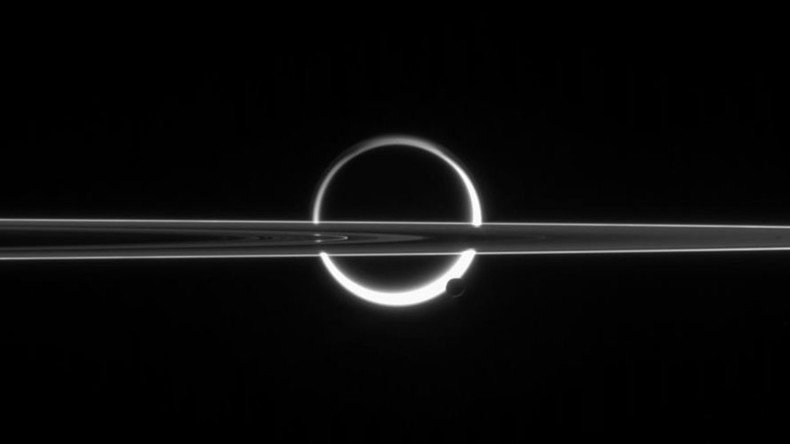Rings of fire: Saturn’s moons split in awesome Cassini image (PHOTOS)

The European Space Agency has shared an incredible picture of Saturn showing the planet’s rings against two of its moons.
It brings scientists one step closer to determining how the planet’s fascinating rings formed.
As the ESA explains, the rings have been a “source of mystery” since their discovery by Galileo Galilei in 1610 and, while it’s still not yet known exactly how they formed, some possibilities have come to light.
One theory is that they simply formed along with Saturn, while another is that they are leftover debris from a moon that got too close to the burning planet and was “ripped apart”.
A striking image of the rings cutting across two of the planet’s “most fascinating” moons, Titan and Enceladus, was captured by the Cassini spacecraft’s narrow-angle camera.
READ MORE: Lost in space no more: NASA back in touch with Kepler telescope
Titan is the larger of the two satellites - 10-times larger, in fact, measuring 5150km (3,200 miles) in diameter to Enceladus’ 504km (313 miles).
The image, while shared by the ESA this week, was taken by Cassini on June 10, 2006, some 3.9 million km from Enceladus and 5.3 million km from Titan.
NASA also shared an image of Saturn this week, taken by Cassini, to show just how huge Saturn’s rings are.
Cassini Division in Saturn's rings is almost as wide as the planet Mercury: https://t.co/kV09XcK3x3@CassiniSaturnpic.twitter.com/6ptTukBCMl
— NASA (@NASA) April 11, 2016
The dark gap between the bright B ring and dimmer A ring is actually as wide as the planet Mercury, at 4,800km (2,980 miles).
The Cassini mission is soon coming to the end of its life after 12 years exploring Saturn’s system. In a rather dramatic fashion, Cassini is due to plunge into Saturn’s atmosphere on September 15, 2017.
READ MORE: Asteroid smashing into Jupiter filmed by amateur astronomers (VIDEO)












